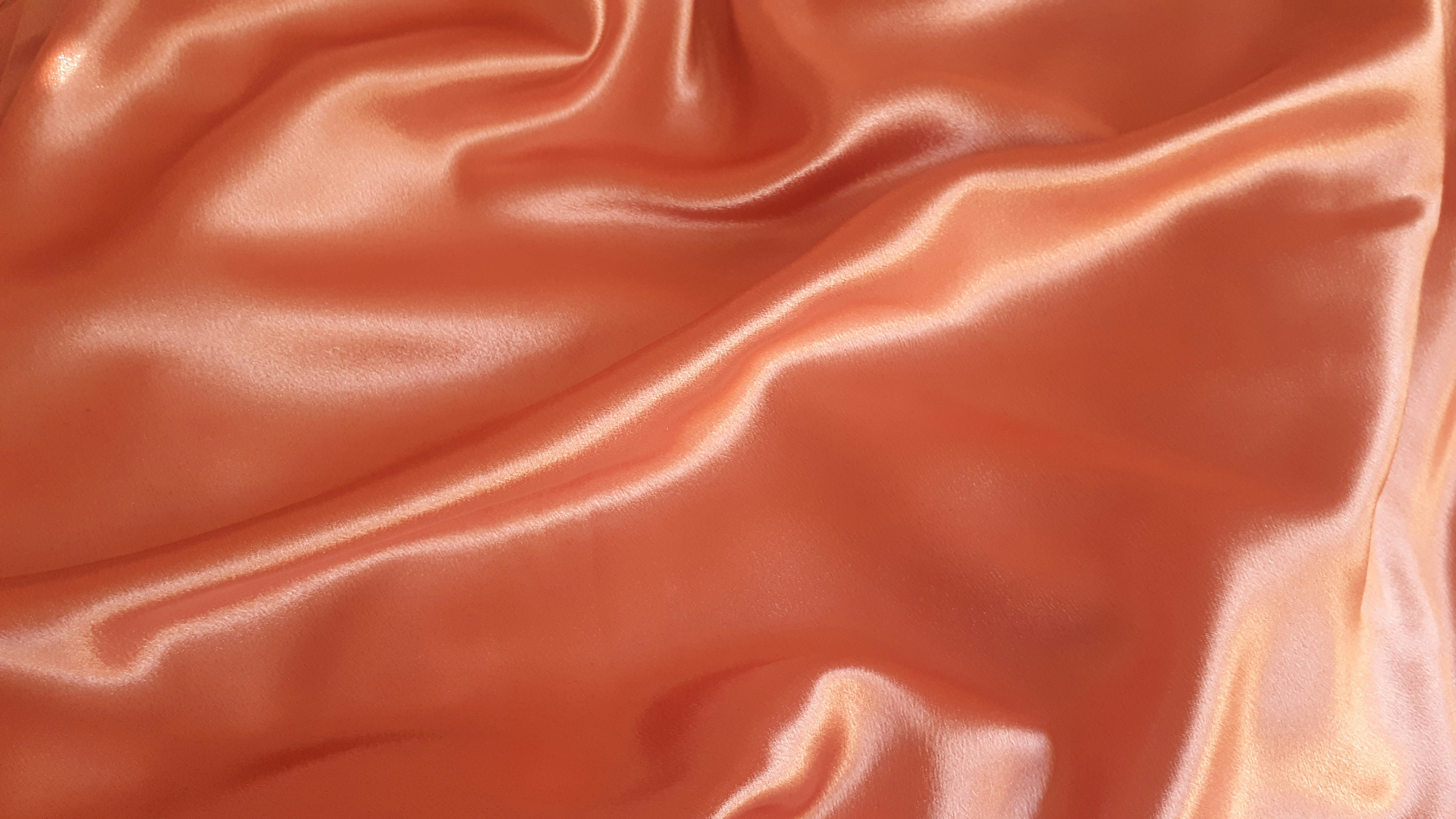
Satin Weave: Effortless Shine and Luxury

Satin weave, a weave pattern rather than a material itself, is renowned for its distinctive sheen and unmatched elegance.Satin weave It is primarily recognized by its lustrous, reflective surface and its tendency to capture and reflect light in a unique way. This sheen is a result of the weaving technique employed in satin fabrics, known as the "satin weave."
Anuprerna showcases satin weave textiles, highlighting their distinct sheen and elegant qualities to customers. Through Anuprerna's commitment to quality and craftsmanship, the satin weave fabrics offered maintain their renowned lustrous surface and light-capturing properties. By making these fabrics available to consumers, Anuprerna plays a role in promoting the enduring appeal of satin weave, known for its sophistication and luxury.
Origin of Silk Satin Fabric

The story of satin begins in China, around 2000 BC during the Han Dynasty. Chinese weavers were the first to develop the technique of creating silk satin. They harnessed the natural sheen and softness of silk fabrics to produce a fabric that was truly extraordinary. This early satin was reserved for royalty and the elite, a symbol of wealth and prestige.
The Satin Weave

The satin weave is characterized by its intricate pattern of floating threads, where warp threads pass over weft threads in a consistent manner, resulting in a smooth and uninterrupted surface. This weave structure minimizes the number of interlacings between threads, which, in turn, reduces friction and creates the glossy finish that satin is celebrated for. Satin is one of the most exquisite textiles produced in India
Types of Satin Fabric
Satin fabric comes in various types, each with its own distinct characteristics and applications. Handloom weavers in India also produce alternatives to satin like mulberry silk and matka silk
Silk Satin
Silk satin fabric is the epitome of opulence. It is crafted from fine silk fibers, known for their natural sheen and softness. This type of satin fabric is often used for high-end fashion garments, lingerie, and luxurious bedding.
Polyester Satin
Polyester satin blend fabric is a more affordable alternative to silk satin. It mimics the sheen of silk but is more durable and less prone to wrinkles. This type of satin is frequently used for dresses, blouses, and linings.
Cotton Satin
Cotton satin material combines the comfort of cotton with the elegance of satin. It is breathable and has a subtle sheen. Cotton satin (satin blended cotton fabric) is often chosen for bed linens and summer clothing.
Acetate Satin
Acetate satin is a synthetic satin known for its high gloss and resistance to wrinkles. It is commonly used in formalwear, including evening gowns and bridal dresses.
Crepe Back Satin
Crepe back satin is a versatile satin material with a smooth satin face and a textured crepe back. It's perfect for creating garments that require both elegance and structure.
Charmeuse Satin
Charmeuse satin is exceptionally smooth and lightweight, making it ideal for flowing evening gowns, lingerie, and accessories.

Characteristics of Satin Material
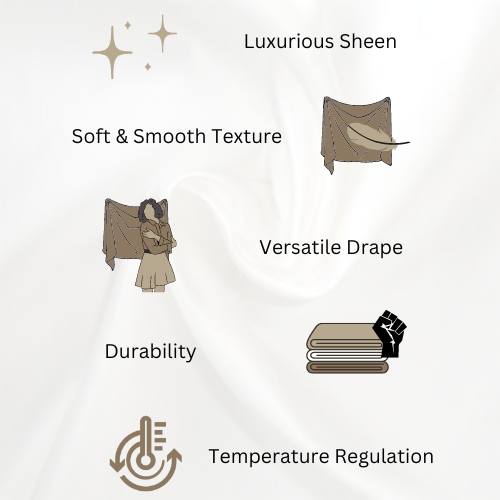
Satin fabric possesses several unique characteristics that set it apart from other textiles:
Luxurious Sheen
Satin's shimmering surface reflects light beautifully, giving it a luxurious appearance that exudes sophistication.
Soft and Smooth Texture
The feel of satin against the skin is unparalleled. Its smooth, silky satin texture is gentle and comfortable to wear.
Versatile Drape
Satin drapes elegantly, making it an excellent choice for clothing that requires a fluid, graceful silhouette.
Durability
Depending on the type of satin and care, it can be remarkably durable, ensuring longevity for your cherished garments and linens.
Temperature Regulation
Satin has natural temperature-regulating properties, making it suitable for both warm and cool climates.
Satin Fabric Uses

Satin fabric's versatility extends to a wide range of applications:
Fashion Apparel
Satin is a staple in the fashion industry, satin clothing includes adorning evening gowns, blouses, ties, and lingerie.
Home Decor
Satin draperies, pillow covers, and bed linens can transform any living space into a luxurious oasis.
Bridal Attire
Brides often choose satin silk for their wedding gowns and accessories, adding an extra touch of elegance to their special day.
Costumes
The sheen of satin lends itself perfectly to theatrical costumes and cosplay outfits.
Accessories
Satin ribbons, scarves, and handbags are popular accessories that showcase satin's beauty.
Caring for Satin Clothing
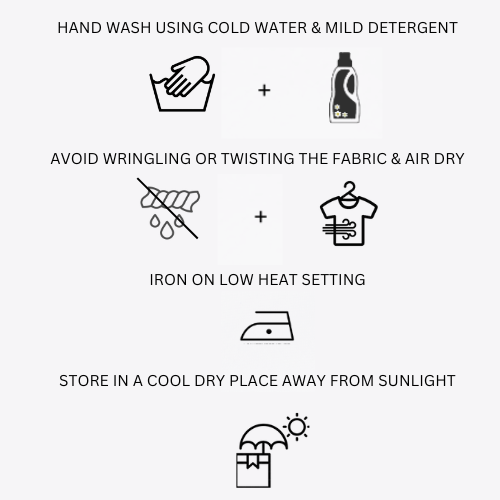
To maintain the allure of satin over time, proper care is essential. Here are some tips for ensuring your satin garments and linens stay in pristine condition:
- Hand Washing: Gently hand wash satin items in cold water with a mild detergent.
- Drying: Avoid wringing or twisting the fabric; instead, lay it flat on a clean towel to air dry.
- Ironing: Use a low-heat setting on your iron or a cloth between the iron and the satin to prevent damage.
- Storage: Store satin items in a cool, dry place, away from direct sunlight, to prevent fading.
related questions
Is satin weave durable?
arrow_drop_downSatin weave is known for its smooth and lustrous surface, but it may not be as durable as some other weave structures. Satin fabrics are prone to snagging and can wear more quickly than denser weaves. The trade-off for the luxurious appearance is a potential reduction in durability. The actual durability depends on factors such as the fiber used, the thickness of the threads, and how well the fabric is cared for.
What is satin weave used for?
arrow_drop_downSatin weave is commonly used for luxurious apparel like evening gowns and lingerie, as well as in bedding, accessories, and decorative home items, thanks to its smooth texture and glossy finish.
Is satin cheaper than cotton?
arrow_drop_downThe cost of satin versus cotton can vary based on factors like the quality, brand, and specific type of fabric. In general, high-quality satin fabrics are often more expensive than basic cotton fabrics.
What is the difference between satin and sateen in weaving?
arrow_drop_downSatin and sateen are weaving patterns that create smooth, glossy fabrics. Satin weave has more floating threads, resulting in a luxurious feel. Sateen, usually cotton-based, is a type of satin weave with fewer interlacings, offering a softer texture.
More Blogs
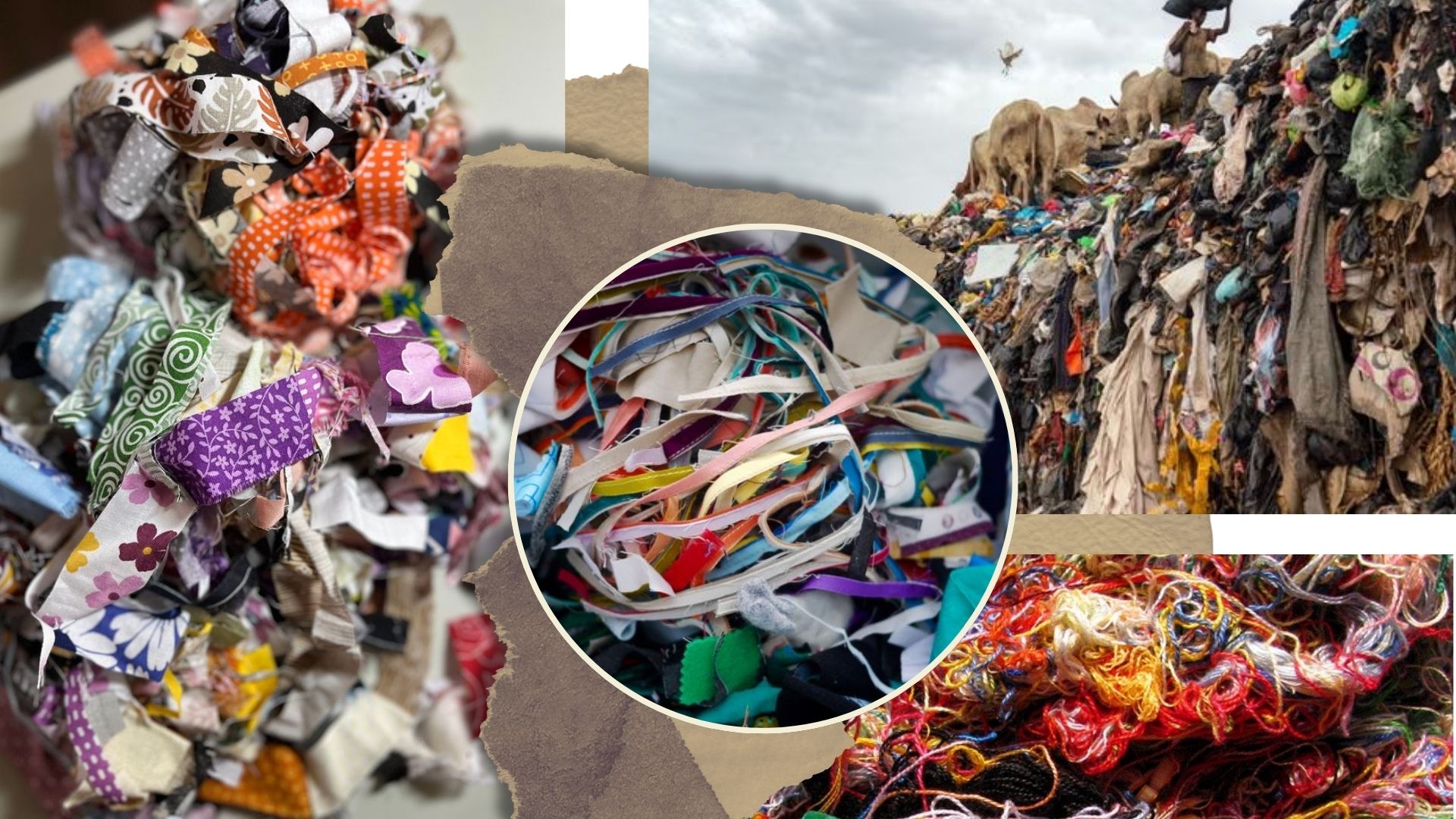
the scrap fabric solution, from clutter to creation
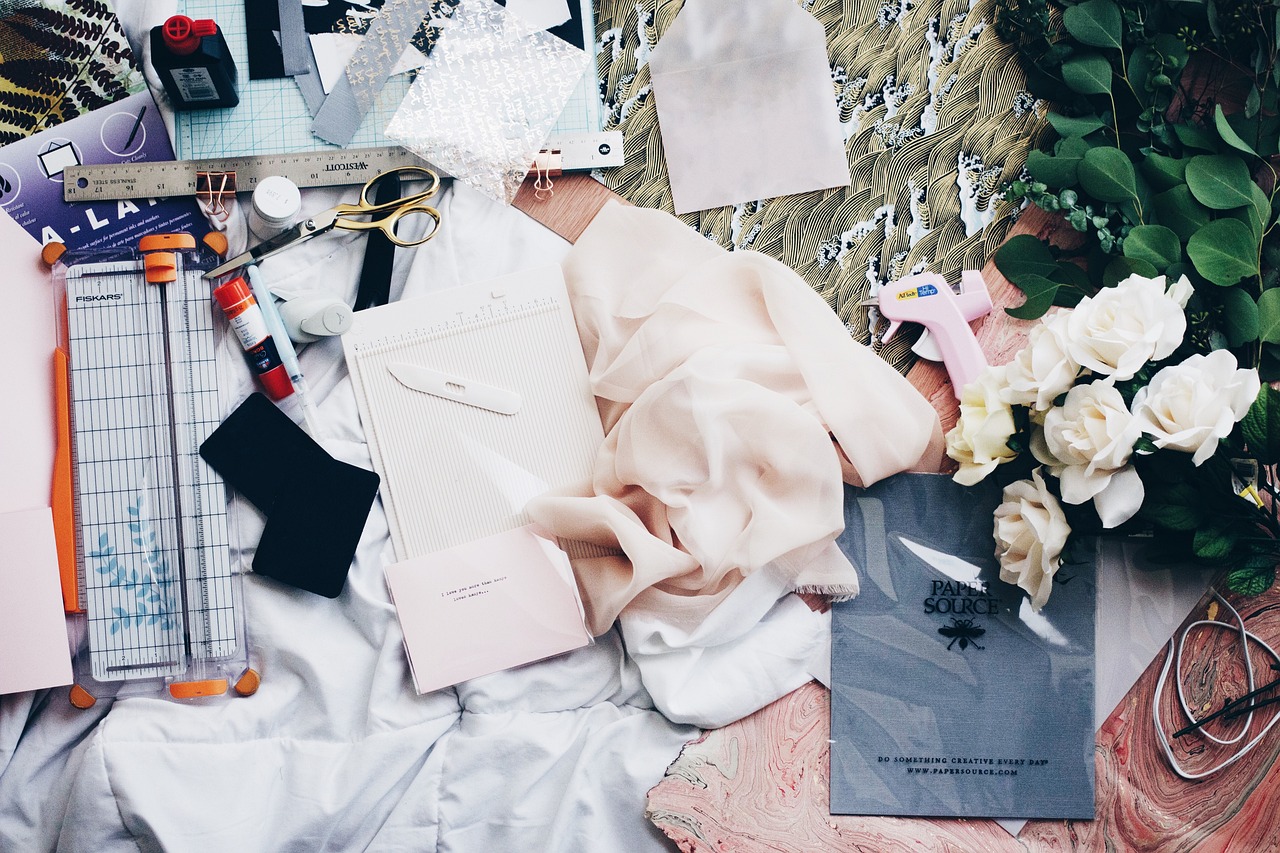
the art of sustainable recyclability
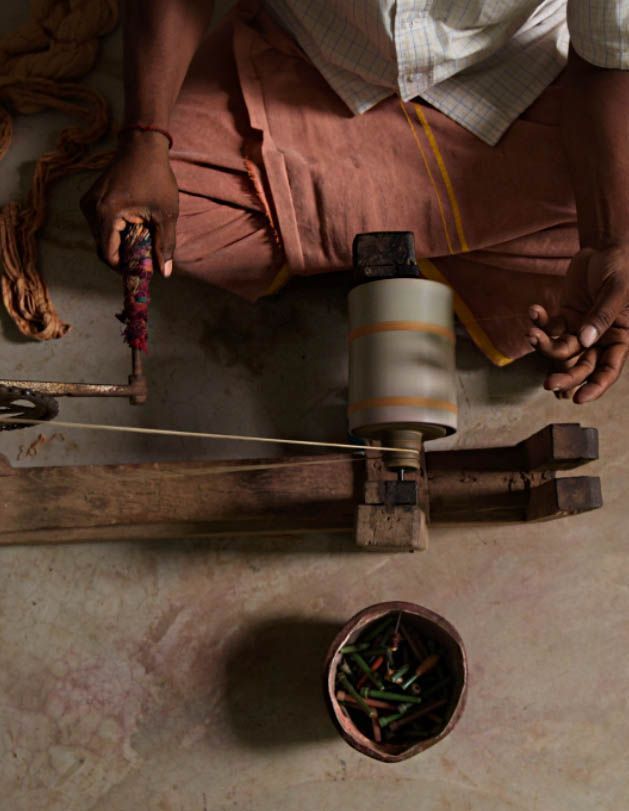
indian handloom in contemporary world
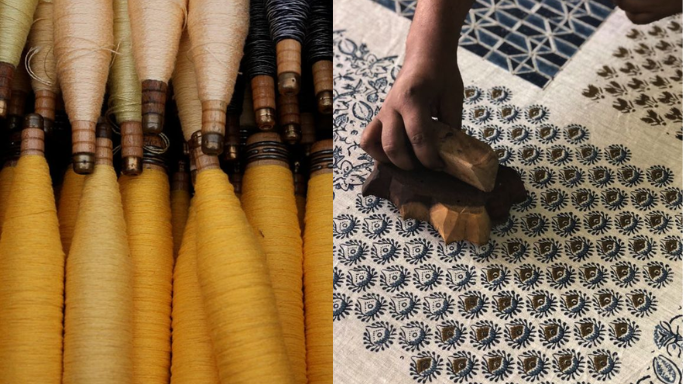
sustainability through handloom manufacturing

how to identify handloom fabrics in a powerloom world

ketia silk - a peace lover






